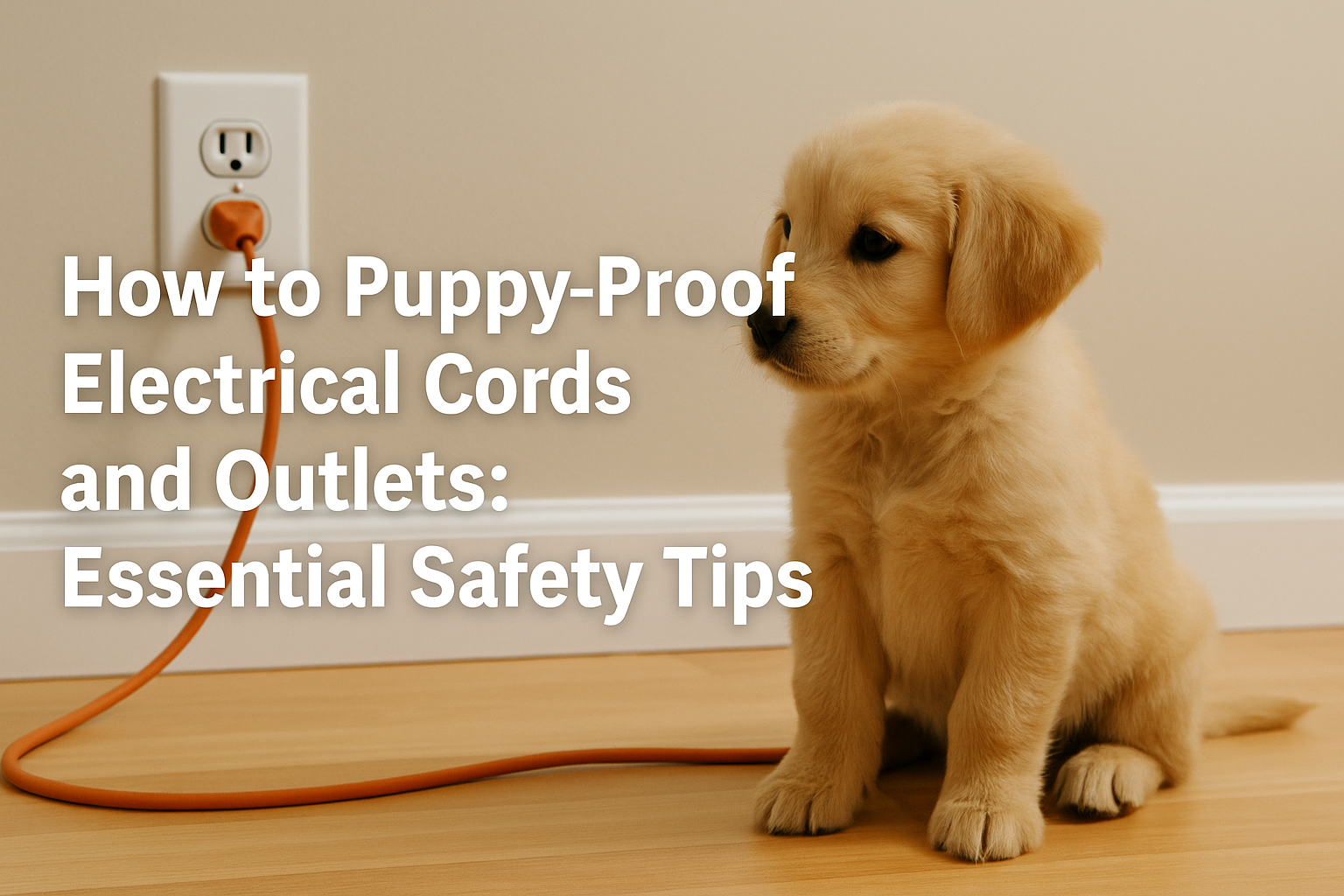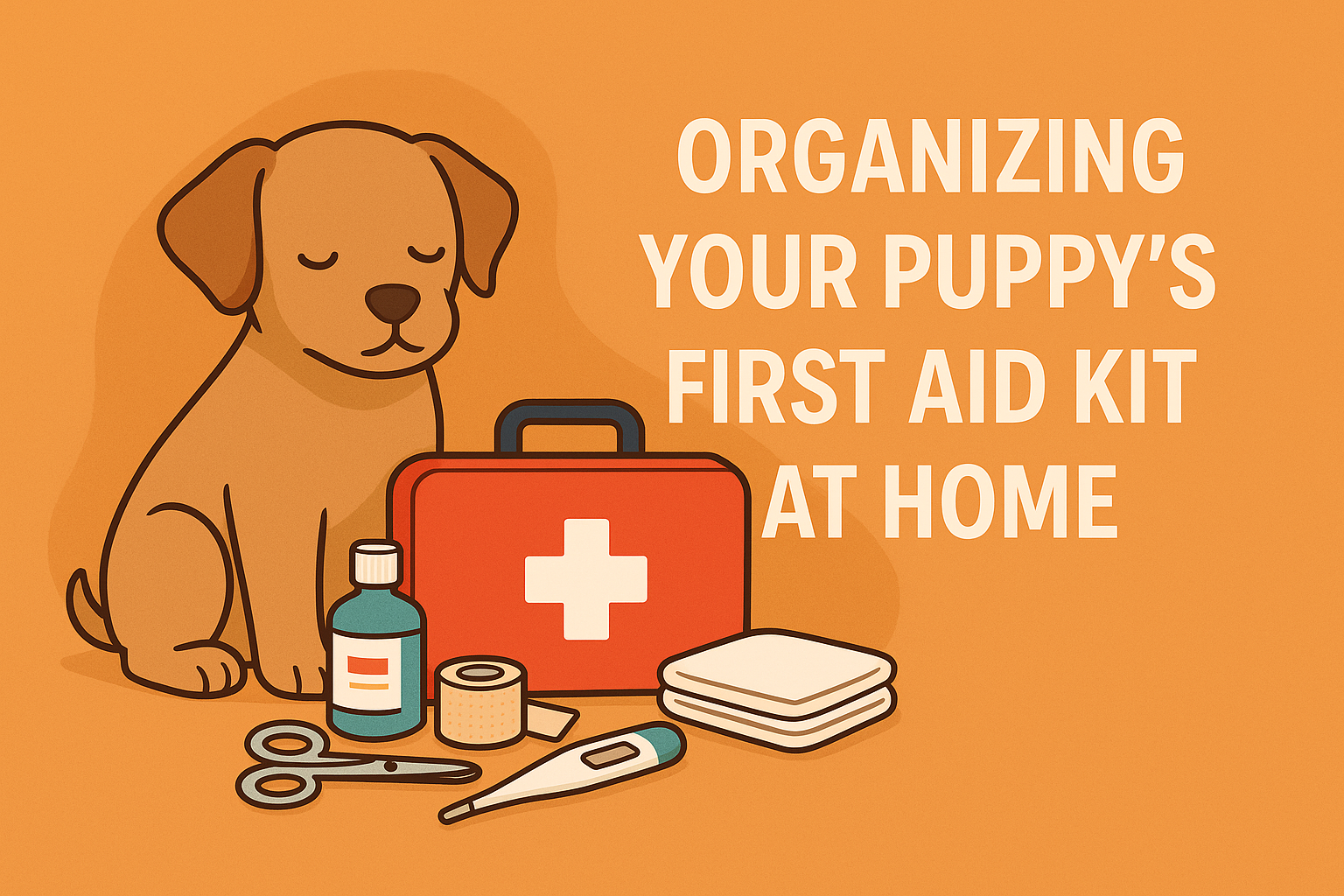Creating a secure environment for your puppy is just as important as feeding them nutritious meals and taking them to the vet. Puppies, by nature, are inquisitive creatures that explore their surroundings with their noses—and unfortunately, their mouths. This innocent curiosity puts them at risk for one of the most overlooked household dangers: electrical cords and outlets. If not addressed early, these hazards can lead to severe injury or even fatality.
In this comprehensive guide, we’ll explore the importance of puppy-proofing your home, how to identify and mitigate high-risk areas, implement practical safety solutions, and ensure your puppy remains protected as they grow. With expert advice, actionable tips, and step-by-step strategies, you’ll learn how to create a pet-friendly space that prioritizes both safety and comfort.
The Hidden Dangers of Electrical Cords in a Puppy’s World
When bringing a new puppy home, many owners focus on essentials like food, toys, and bedding. However, few realize the magnitude of risk that everyday household items, like electrical cords and outlets, pose to their furry friends. Puppies are known to chew on anything within reach—and a live wire can be a recipe for disaster.
Electrical injuries in dogs may include oral burns, neurological damage, and in severe cases, death. Fires caused by chewed cords are also a serious concern. Taking proactive steps now is the best way to protect your pet from these entirely avoidable dangers.
Evaluating Your Home for Puppy Electrical Hazards
Before you can safeguard your puppy, you need to pinpoint the areas in your home most susceptible to electrical threats. These are often zones with heavy appliance use or poor cable management.
Living Room: A common hotspot for cords, from television systems to lamps. With open floor space, puppies can easily access cables tucked behind entertainment centers or beneath coffee tables.
Home Office: Chargers, routers, and computers create a tangle of wires that look like chew toys to a curious pup. It’s critical to organize and secure cords in this room.
Kitchen: Small appliances like blenders, toasters, and coffee machines have cords that often dangle over counters or across floors, making them prime targets for tugging and chewing.
Conduct a walk-through at your puppy’s eye level. What you see from your standing height is very different from what your puppy experiences. This method helps uncover hidden threats that are easily overlooked.
Effective Cord Management Solutions for Puppy-Proofing
Once you’ve identified the risk zones, the next step is implementing cord management solutions designed to make electrical hazards inaccessible and unappealing.
Cord Covers & Protectors: Available in flexible or rigid materials, these products encase cords and deter chewing. Many options blend with flooring and decor, making them aesthetically pleasing while functional.
Cable Management Sleeves & Channels: Bundle cords together in tight, chew-resistant sleeves. Wall-mounted cable channels keep wires elevated and away from reach. This not only improves safety but declutters the room.
Cord Clips & Wall Fasteners: Use adhesive-backed cord clips to secure wires along the base of walls or behind furniture. These tools minimize loose loops and remove slack—two key temptations for teething puppies.
Elevating or Concealing Outlets and Wiring
Moving cords out of your puppy’s sightline drastically lowers the chance of interaction. While cord covers and clips help, sometimes the best solution is to completely remove accessibility.
Furniture Placement: Strategically repositioning furniture can act as a natural barrier. Placing couches in front of wall outlets or entertainment units can shield cords from view.
Cord Organizers with Built-in Outlets: These organizers sit atop desks or counters and reroute power up and away from the floor. Ideal for offices and bedrooms, they eliminate low-hanging wires.
In-Wall Power Kits: For a long-term solution, consider installing in-wall cable routing systems. These kits safely route wires behind drywall, removing them entirely from your pet’s environment.
Training Techniques to Discourage Dangerous Chewing
Physical solutions are important, but behavioral training is equally critical. Teaching your puppy that cords are off-limits will reinforce safe habits and reduce anxiety for pet owners.
Teach the “Leave It” Command: Use treats and positive reinforcement to teach your puppy to turn away from cords. Be consistent and reward success immediately.
Redirection with Chew Toys: Provide a variety of chew toys that simulate different textures. When your puppy goes for a cord, redirect them to a toy and praise their choice.
Negative Reinforcement Tools: Consider pet-safe deterrent sprays with bitter flavors. Apply them to cords to discourage chewing behavior. Always follow up with positive alternatives.
Puppy-Proofing Electrical Outlets
Exposed outlets pose just as much danger as cords, especially if they’re located low on walls or near sleeping areas. Here’s how to secure them effectively:
Install Safety Plugs: Inexpensive and easy to use, safety plugs fit into unused outlets, preventing any chance of curious tongues or noses making contact.
Use Outlet Covers with Sliding Plates: These covers offer more robust protection, automatically closing when plugs are removed. Ideal for high-traffic or high-risk rooms.
Add Barriers or Pet Gates: In rooms with multiple low outlets, consider using pet gates to restrict access altogether, especially during unsupervised times.
How to Apply and Maintain Puppy-Proofing Measures
Applying these safety techniques should be done methodically. Start with a room-by-room assessment, install physical barriers or tools, then layer in training. Use a checklist to monitor progress, and revisit high-risk areas as your puppy grows and gains mobility.
Set a reminder to inspect your home monthly. Look for wear and tear on cord covers or new areas of interest your puppy might have discovered. Update chew toys regularly to keep their attention focused on safe objects. Reinforce training weekly with fun, short sessions.
When to Seek Professional Help
Despite best efforts, some puppies exhibit persistent chewing or display anxiety-related behaviors that heighten risk. If your puppy continues to target cords or outlets, it may be time to bring in professional support.
A certified dog trainer can identify underlying behavioral causes and tailor a program specific to your home layout and your pet’s personality. Likewise, a pet behaviorist or veterinarian can rule out dietary deficiencies or medical conditions that lead to compulsive chewing.
For homeowners, hiring a licensed electrician for advanced solutions—like rerouting wiring or installing in-wall power channels—can ensure compliance with safety codes and offer permanent protection.
Conclusion: A Safe Puppy is a Happy Puppy
Creating a safe space for your puppy goes beyond good intentions—it requires deliberate action and consistent attention. From securing cords and outlets to teaching behavioral boundaries, each measure contributes to a safe, stress-free environment where your puppy can grow and thrive.
Stay observant, proactive, and don’t hesitate to evolve your puppy-proofing strategy as your furry friend grows. Your commitment to safety now builds the foundation for a lifetime of health and happiness.
Remember: a curious puppy is a healthy puppy—just make sure their curiosity is always safe.








